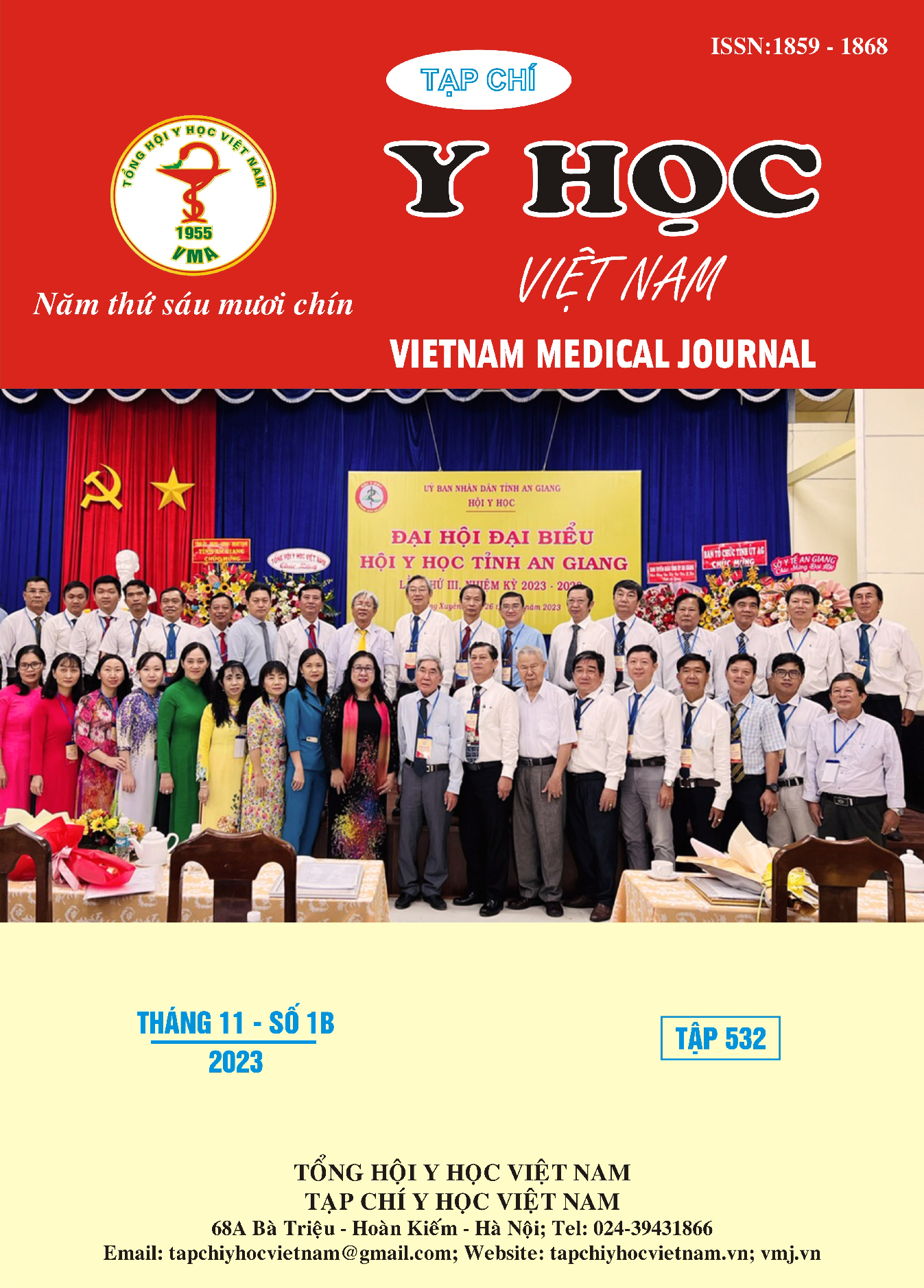DISTRIBUTION AND ANTIBIOTIC RESISTANCE CHARACTERISTICS OF BACTERIA ISOLATED FROM PATIENTS AT HOSPITAL 199
Main Article Content
Abstract
Objective: This study aimed to assess the prevalence and distribution of pathogenic bacteria isolated at Hospital 199, as well as evaluate the antibiotic resistance levels exhibited by these bacterial strains. Material and methods: A cross-sectional descriptive study was conducted, involving all bacterial strains isolated from different types of clinical specimens collected from patients undergoing treatment at Hospital 199 during the period from December 2022 to August 2023. Results: The findings revealed an infection rate of 88,2% among the clinical specimens. Eight strains of pathogenic bacteria were identified, with Pseudomonas spp and Streptococcus spp being the most prevalent, accounting for 44.8% and 35.8% respectively. Other frequently encountered pathogenic bacteria included Staphylococcus, Enterobacter, Klebsiella, Acinetobacter, and Proteus, with proportions ranging from 1,5% to 9%. The bacterial strains exhibited high levels of antibiotic resistance, with 88,1% showing resistance, and more than 80% demonstrating multidrug resistance (resistant to three or more antibiotics). Pseudomonas spp displayed complete resistance to Ampicillin and Ticarcillin (100%), Pseudomonas spp. is susceptible to antibiotics such as Vancomycin, Ofloxacin (100%); Amikacin (92,6%); Colistin (91,3%); Piperacillin, Cefuroxim, Imipenem (80%). Streptococcus spp exhibited complete resistance to multiple antibiotics including Ampicillin, Cefuroxim, Ceftriaxone, Ticarcillin, Ticarcillin - Clavulanic acid, Optochin, and Bacitracin (100%), along with susceptible to Tobramycin, Piperacillin, Ciprofloxacin, Imipenem, Meropenem, Ceftazidime (100%); Vancomycin (90,9%); Cloramphenicol (80%). Conclusion: The most commonly encountered pathogenic bacteria were Pseudomonas spp, Streptococcus spp, Staphylococcus, Enterobacter, Klebsiella, Acinetobacter, and Proteus. The isolated bacteria exhibited resistance to multiple commonly used antibiotics, with a high prevalence of multidrug resistance.
Article Details
Keywords
Bacteria, antibiotic resistance, hospital 199
References
2. Nguyễn Thị Phương và cs (2020). “Khảo sát đề kháng kháng sinh của các chủng vi khuẩn gây bệnh phân lập tại bệnh viện Hoàn mỹ Vạn phúc 2, năm 2019-2020”. Tạp chí Y học Việt Nam tập 496 - tháng 11- số đặc biệt 2020.
3. Phạm Minh Quân (2022). “Tác nhân vi sinh vật và kết quả điều trị ở trẻ viêm phổi có suy hô hấp tại bệnh viện nhi đồng cần thơ, năm 2022”. Tạp chí Y dược học Cần Thơ - số 52/2022.
4. Mai Thị Hiếu, Nguyễn Văn An, Kiều Chí Thành (2014). “Nghiên cứu tỷ lệ phân lập và tính kháng kháng sinh của các chủng Steptococcus pneumoniae phân lập từ bệnh phẩm đường hô hấp của trẻ dưới 5 tuổi bị nhiễm khuẩn hô hấp cấp tính tại Bệnh Viện nhi Thanh Hoá từ tháng 6/2013 – 1/2014”. Tổng hội Y học Việt Nam tập 447- tháng 10- số 1 năm 2016.
5. Nguyễn Văn Kính (2010). "Phân tích thực trạng sử dụng kháng sinh và kháng kháng sinh ở Việt Nam". Global Antibiotic Resistance Partnership, pp. 3 - 4.
6. Đoàn Ngọc Ánh (2022). “Khảo sát sự phân bố và đề kháng kháng sinh của các vi khuẩn thường gặp ở các bệnh nhân nhiễm khuẩn tại Bệnh viện tim mạch An Giang từ tháng 10/2020-10/2022”.
7. Bonyadi P, Saleh NT, Dehghani M, Yamini M, Amini K (2022). “Prevalence of antibiotic resistance of Pseudomonas aeruginosa in cystic fibrosis infection: A systematic review and meta-analysis”. Microb Pathog. doi: 10.1016/j.micpath.2022.105461.
8. Sambrano H, Castillo JC, Ramos CW, de Mayorga B, Chen O, Durán O, Ciniglio C, Aguilar C, Cisterna O, de Chial M (2021). “Prevalence of antibiotic resistance and virulent factors in nosocomial clinical isolates of Pseudomonas aeruginosa from Panamá”. Braz J Infect Dis. doi: 10.1016/j.bjid.2020.11.003.
9. Reig S, Le Gouellec A, Bleves S (2022). “What Is New in the Anti-Pseudomonas aeruginosa Clinical Development Pipeline Since the 2017 WHO Alert? Front Cell Infect Microbiol”. doi: 10.3389/fcimb.2022.909731.


